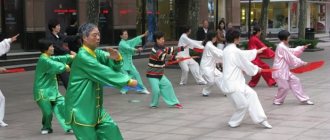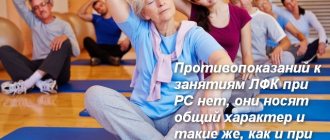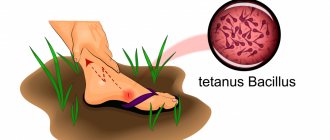What is sciatica?
This disease is a syndrome manifested by acute pain in the area of the sciatic nerve . At the site of the nerve itself or in the lower back, compression of the spinal cord roots occurs. There are many reasons for pinched nerve endings in the spine, and therefore the manifestations of the syndrome are very diverse.
The term sciatica refers to a syndrome, not a disease. The pathology itself is called lumbosacral radiculitis. Depending on the causes of manifestation, there are other options for the name of sciatica: radiculopathy, radiculoischemia.
Most people do not know about sciatica, its symptoms and treatment. The human body is a complex mechanism that consists of tissues and many nerve networks.
When the sciatic nerve is pinched, the pain spreads to the entire leg
The sciatic nerve is the longest . It is formed by 5 pairs of spinal cord roots. If even one gets pinched, rather unpleasant symptoms immediately appear. This compression of the nerve ending is called sciatica.
Pinched sciatic nerve: what is it?
This pathology causes severe pain to a person, the pain syndrome extends to the toes. Mostly, the pain affects one limb, but it is possible that the patient has a bilateral problem.
Pinching (block) of the sciatic nerve or sciatica is a condition due to which compression occurs, constriction of the nerve bundle by a muscle ring. The reason is increased tone of the piriformis muscle. The structure of the nerve fiber remains intact. The disease is reversible and can be cured with timely initiation of therapy.
According to statistics, sciatica develops as a result of excessive physical exertion and during sudden movements. The sciatic nerve can become pinched when you spend a long time in an awkward or uncomfortable position for a person.
The process can be caused by the presence of the following pathologies:
- Intervertebral hernia;
- Spinal deformities as a result of falling from a height, injuries and bruises in road accidents;
- In case of a purulent, inflammatory process or in the presence of tumors;
- In case of deformation, destruction of the lumbar or sacral vertebrae;
Often accompanied by diseases or inflammation of internal organs. Obesity, metabolic disorders and diabetes may contribute to the process.
Rarely, similar pain occurs with vascular pathology, for example, possibly the formation of blood clots. This is a fairly serious situation that requires immediate intervention.
Pinching of the sciatic nerve can occur as a result of hypothermia, intoxication and the presence of infections in the body. A common cause is muscle spasms.
Why does a nerve get pinched during pregnancy?
During pregnancy, a woman often experiences pinching of the sciatic nerve due to increased stress. The center of gravity is redistributed, the spinal column can change its shape. In addition, ligaments and fascia relax, which can lead to disruption of the usual muscle frame.
Pregnant women are not recommended to stay in an uncomfortable position for a long time. For prevention, you need to sit less, move more often, and use the knee-elbow position in the later stages. This allows you to remove the load from the pelvic ring, relax the muscles and relieve pressure on the internal organs.
Is menopause and nerve damage related?
Women during menopause may experience sciatica as a result of the hormonal changes that occur in the body during menopause. It is important to recognize the disease in time and take measures to eliminate it.
Doctors strongly recommend not delaying a visit to the doctor when the first signs of pathology appear.
Basic principles of treatment
Complex therapy not only relieves pain, but also eliminates the causes that provoked the pinched nerve.
During the period of exacerbation of sciatica, when the pain is very severe, symptomatic treatment is carried out . To eliminate pain, various painkillers (Diclofenac, Ketanov), muscle relaxants and hormones are used. Antioxidants and vascular agents will help speed up the end of the attack, improving blood circulation and restoring the normal functioning of the affected tissues.
During remission, the pain disappears, but tissue nutritional disturbances and difficulties with movement remain . Therefore, maintenance therapy is necessary during this period.
For this purpose, physiotherapeutic procedures : massage, magnetic therapy, diadynamic currents, darsonvalization. They relax the muscles and eliminate pinched nerves, allowing for complete healing. These procedures eliminate recurrences of painful attacks.
Maintenance therapy also includes taking metabolic drugs, vitamins and antioxidants that restore blood microcirculation. If sciatica is caused by an infectious disease, then antibiotics may be used.
As a last resort, surgical treatment is performed. For example, with a hernia or tumor in the spine. Surgery is necessary if sciatic nerve compression has caused defecation disorder or urinary incontinence.
Physiotherapy
To prevent inflammation of the sciatic nerve, physiotherapeutic procedures are used:
- Vacuum massage – used to prevent back pain. The procedure enhances lymphatic drainage, improves skin elasticity and tones muscles.
- Paraffin treatment – applications have an anti-inflammatory and analgesic effect. A course of therapy restores the conductivity of the nervous system and relieves muscle spasms.
- Hydrotherapy – can also be used at home, the recommended temperature is 35–37°C. Water procedures promote relaxation and normalize sleep.
- Electrophoresis is a method of introducing medications into the back muscles that relieve pain, overstrain and promote tissue regeneration.
Exercise therapy for sciatica
Patients often ignore or underestimate prescribed exercises for sciatica. Many patients find that medications are more effective than therapeutic exercises. This opinion is clearly erroneous.
A set of properly selected exercises improves blood circulation, relieves inflammation and activates metabolism . Therapeutic exercises speed up recovery, and pain can be relieved in a few days.
In addition, other spinal problems that may cause sciatica are eliminated. All exercises are performed only in the absence of pain; during periods of exacerbation, training is strictly prohibited. The main thing is to do the exercises correctly.
Doing exercises is prohibited during the acute phase of sciatica. For gymnastics to be effective, you should adhere to certain recommendations:
- It is better to master the complex under the supervision of a doctor.
- Exercises will be beneficial if done twice a day.
- All exercises for sciatica are done on a hard surface.
- During an exacerbation of the disease, breaks are allowed, but then you need to continue performing the complex, taking into account your state of health.
- Gymnastics should be done regularly. If there is no desire or strength, then you should not cancel the training, you need to do at least 2-3 exercises at half strength.
If the disease is in the acute phase, then the exercises are not performed until the pain disappears.
Physical activity is also undesirable in some pathologies:
- Mental disorders.
- Epilepsy (frequent seizures).
- Serious spinal injuries.
- Oncology.
- Heart diseases.
- Viral infections that are accompanied by fever.
Due to these restrictions, you should first consult a doctor or undergo a full examination.
Video: “The most effective exercise for pinched sciatic nerve”
Find out more about spinal neuralgia:
- Radicular syndrome with osteochondrosis in the cervical spine
- You can find out how to give injections for sciatica here
- A list of ointments for sciatica is posted on the page
Causes of pinching
It is worth noting the following factors for the development of sciatica:
- sharp spasm in the muscles;
- inflammation in the lumbar region;
- a combination of these two factors.
If your muscles are tight, and there is also fever, redness of the skin, numbness and swelling, you should immediately consult a doctor.
If the pain is tolerable, then you can try doing exercises.
Exercise technique
Did you know that...
Next fact
If you perform the exercises correctly, gymnastics can completely replace drug therapy. All movements of the complexes are physiological and natural, so there will be no fatigue or sprains .
There are many exercises for inflammation of the sciatic nerve, and they are divided into certain groups.
In a lying position:
- Pulling your knees to your chest while lying on your back. Perform at least 10 times.
- Lying on your side, stretch your legs as far as possible. Then bend both legs and pull them towards your chest, then straighten. Do the same 10 times.
- Lie on your stomach. Palms near shoulders. Straightening your arms, stretch your back as much as possible, looking up. Make a short delay and return to your previous position. For beginners, 5 approaches will be enough, but over time you can increase to 15.
- Lie on your back. Pull your feet towards your buttocks. Arms crossed over chest. As you inhale, you should raise your torso, and as you exhale, lower it. Performed 15 times.
Sitting:
- Sit on the floor and stretch your legs forward. Spread your arms to the sides (at shoulder level) and bring them back, trying to connect your shoulder blades. Movements should be made smoothly, without jerking. Repeat at least 5 times.
- From a sitting position (arms extended upward), slowly lie on your back. Then raise your legs to a right angle. The lower back should not lift off the floor, as this will place excessive stress on the spine.
- Sit on a chair. Place your hands on the back of your head and make slow turns with your body.
Standing:
- Feet shoulder-width apart, back as straight as possible. Raise your right hand and lean to the left. The arm and torso should be parallel to the floor. Then return to the starting position and lean to the right.
- Hands on the belt. You need to take turns raising your straight leg. It doesn’t have to be high, you should focus on your feelings.
- Place your feet as wide as possible. Bend your knees (“rider pose”) and shift your weight to each leg in turn. This exercise improves blood circulation in the pelvic area.
Gymnastics for the prevention of sciatica
All exercises are an excellent way to prevent sciatica . Regular implementation of the complex will prevent the sudden onset of a painful attack.
Video: “Exercises for pinched sciatic nerve”
Exercises from a sitting position
This set of classes includes exercises performed in a sitting position on the floor or on a chair.
Exercise 1
- Sit on the floor, bend your legs, and keep them in front of you.
- Place your right leg on your left thigh. You need to hold your left leg.
- Slowly turn your body and head to the right.
- Hold this position for 30 seconds.
- Repeat all steps for the second leg.
Exercise 2
- Sit on a stable chair.
- Place the ankle of your left foot on your right knee.
- Slowly and carefully lean forward. Make sure your back remains straight.
- Freeze in this position for half a minute.
- Repeat the exercise 5 times for each leg.
Exercises for acute back pain
With sciatica, lumbago (lumbago) often occurs . To relieve severe pain, there are two exercises that eliminate pain and restore motor activity.
- You need to stand at a horizontal surface, which should be at pelvic level. For example, a table or a couch. Slowly lie down on it with your body and relax well. While inhaling, inflate your stomach for 5 seconds, then exhale as much as possible. Repeat no more than 3 times.
- Take a position on all fours. The back should not bend. Relax your neck and lower your head. Inhale with your stomach (slow), hold for 5 seconds, exhale completely. After performing this breathing exercise 10 times, a person will notice how the pain recedes.
In order not to suffer from acute pain due to sciatica, it is advisable to visit the pool , take long walks, and ride a bicycle. I would recommend doing yoga, but with an experienced instructor.
Symptoms
As a rule, the development of sciatica occurs gradually. The first signs are of a mild discomfort and are often perceived by people as a manifestation of banal fatigue after performing physical work. Initially, there may be slight pain in the lumbar region, which radiates to the buttock. In this case, slight discomfort occurs in the leg along the back of the thigh.
The belief of patients that such symptoms are a consequence of overwork and the fact that they occur mainly after physical exertion and disappear without a trace after a short rest are rooted. This condition can persist for several years and is already perceived by the patient as normal.
But sooner or later, lifting an object that is too heavy, hypothermia, or simply careless movement provokes an attack. A person is constrained by pain. It interferes with normal mobility and is often accompanied by autonomic and neurological symptoms.
A specific symptom of sciatica is unilateral pain affecting only one of the buttocks and one leg. As a result of the progression of pathological changes, it increasingly differs in functionality and even appearance from a healthy leg: it is cold to the touch, smaller than healthy, the skin is pale and dry.
The nature of the disorders directly depends on which of the fibers of the sciatic nerve are affected as a result of infringement: motor or sensory. Thus, patients may suffer from:
- decreased sensitivity of the skin of the affected lower limb; sometimes, on the contrary, there is increased sensitivity of the outer edge of the foot;
- muscle weakness in the legs and feet;
- changes in tissue nutrition, which leads to pale skin and thinning;
- disorders of the pelvic organs, which may be accompanied by loss of control over the process of urination and defecation;
- bowel dysfunction, etc.
Sciatica typically has a paroxysmal course with periodic exacerbations.
Manifestations of the disease may vary in intensity and nature. In some cases, acute pain comes to the fore, in others, patients will complain more about limited mobility or other symptoms, mentioning pain only in passing. Thus, sciatica can manifest itself in varying degrees of pain, motor, sensory and neurological impairment. Let's take a closer look at each group of symptoms separately.
Sciatica pain
The nature of pain when the sciatic nerve is pinched can be different. During an attack they are sharp, powerful, burning and shooting. Patients describe them as being struck with a knife or electric shock. Literally any movement or change in body position is extremely painful, and bending or sitting leads to a sudden aggravation of the pain syndrome. Often the pain does not subside even when lying down.
With chronic sciatica, the pain may not be so severe. They are often nagging, aching, present constantly or appear after physical activity. Just as with an attack, they tend to get worse during bending, lifting a leg, or prolonged sitting or standing.
With sciatica, the epicenter of pain is in the lumbosacral spine or directly in the area where the sciatic nerve is pinched. But a typical feature of the disease is the spread of pain along the nerve, i.e., along the buttock, back of the thigh, lower leg, and sometimes even to the toes. To reduce pain, a person takes a forced body position. He leans forward and to the side.
When you try to turn the affected leg bent inward at the hip and knee, a sharp pain occurs in the buttock.
Motor and sensory disorders
The sciatic nerve is formed by sensory and motor fibers. It is responsible for providing sensitivity and mobility to the muscles of the back of the legs. Therefore, when it is compressed, both motor and sensory disorders may occur. They can manifest themselves in varying degrees, be combined with pain or be isolated. In most cases, one or more of the following symptoms are present. Combinations can be different, so different patients with sciatica rarely have the same clinical picture:
- decreased sensitivity of the skin along the lateral and posterior surface of the lower leg and throughout the entire foot;
- the presence of tingling, numbness, goosebumps;
- violations of flexion and extension of the muscles of the back of the thigh and lower leg, which negatively affects the work of the knee and ankle joints and, accordingly, gait (it seems that a person does not bend his leg at all when walking);
- difficulties when bending;
- weakness in the foot, which can literally hang completely motionless on the shin;
- reduction in muscle size due to their gradual atrophy;
- complete paralysis of the muscles of the foot and the back of the thigh and lower leg (with severe sciatica);
- dryness, peeling, thinning, paleness or, conversely, redness of the skin of the lower extremities;
- increased sweating;
- thinning and brittle toenails.
Over time, it becomes increasingly difficult for the patient to walk, since the affected leg loses stability and cannot fully perform its supporting function. There is progressive weakness and lameness.
Impaired nerve conduction can lead to insufficient tissue trophism, which can result in osteoporosis. In such cases, fractures often occur, even under the influence of factors that are normally unable to disrupt the integrity of the bones.
Osteoporosis is a disease in which bone tissue becomes porous, loses its normal strength and becomes brittle.
Symptoms - neurological manifestations
Since the sciatic nerve is pinched in one place or another, this is accompanied by impaired conduction of nerve impulses and a decrease in the intensity or complete loss of reflexes. It is the presence of such symptoms that most often helps a neurologist make the correct diagnosis.
With sciatica, the following are practically not manifested or are completely absent:
- Achilles tendon reflex - a blow with a hammer or the edge of the palm to the Achilles tendon when a person takes a lying position on his stomach normally provokes the foot to move back to a position as if the person is standing on tiptoes;
- knee reflex - hitting a point under the knee with a hammer or the edge of the palm normally leads to extension of the knee joint if a person sits on the edge of the bed with his legs hanging freely;
- plantar reflex - passing the tip of a milk or any other blunt object along a relaxed foot from the heel to the toes provokes its flexion.
Also a clear neurological sign of sciatica is the occurrence of severe pain in the lower back, buttock and thigh when trying to lift a straight leg while lying on your back. When bending the leg, its intensity decreases.
In addition, at some points the sciatic nerve runs very close to the skin: in the subgluteal fold, the back of the knee, the center of the lower leg and in the area of the Achilles tendon. Such points are called Vallee points. Therefore, pressing on them provokes an attack of pain in the presence of sciatica.
Exercises according to the Bubnovsky system
To eliminate sciatica, a special complex has been developed aimed at toning the spinal muscles and normalizing joint mobility:
- "Cat" . You need to get on all fours and bend your back down as you inhale, and arch your back up as you exhale.
- "Pumping" . In the same position, do push-ups from the floor. Inhale - bend your arms, exhale - straighten them.
- "Pulling" . Lie on your back, bend your knees, and clasp your hands behind your head. As you exhale, touch your elbows to your knees, and while inhaling, return to the starting position.
- "Bridge" . Performed while lying on your back. As you exhale, the lower back rises, and as you inhale, it lowers.
An example of how to do the cat exercise correctly
Alternative therapy methods
Prevention and treatment of inflammation of the sciatic nerve is carried out using alternative therapy methods.
Acupuncture is a relaxing procedure that increases the tone of the body and improves metabolic processes in tissues. The preventive course helps to relax the back muscles and improve blood flow in the pelvic organs. Regular sessions will help prevent the development of inflammation in the lower back and pelvic area.
Manual therapy is aimed at restoring the motor functions of the joints and spine. The effectiveness of the preventive method is felt after the first sessions, and the therapeutic effect lasts for six months.
Therapeutic massage sessions relieve back and lower back pain, improve blood flow and promote muscle relaxation. With regular exercise, the muscle fibers responsible for supporting the spine are strengthened.
What exercises are contraindicated
Therapeutic exercises for sciatica always begin with a warm-up. Then they do stretching, gradually making the movements more difficult.
What exercises are prohibited to perform with this disease? Do not approach the bar under any circumstances . Excessive stress will further compress the intervertebral discs and can completely destroy them.
What not to do:
- Tilts and turns with weight . Friction occurs between the vertebrae, and this leads to disc injury.
- It is forbidden to squat with weight if the simulator is set to a rigid trajectory of movement, which does not always correspond to the anatomical structure of the spine.
Oddly enough, the most harmful thing for the spine is lying for long periods of time. To avoid pain in the lumbar region, the spinal column must have a strong muscular corset.
Video: “What exercise therapy exercises to do for sciatic neuralgia”
Prevention
In order to prevent serious problems with the sciatic nerve, we recommend following simple and effective tips:
- do not lift heavy objects;
- do not wear high-heeled shoes;
- monitor your weight, keep it within normal limits (BMI<25);
- get rid of bad habits;
- sit in the correct position;
- take breaks every 20 minutes if you have a sedentary job. Use this time to just walk around;
- for sleeping, use a medium-hard mattress;
Perform any physical exercises and workouts only after consulting a doctor.










